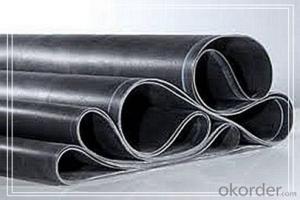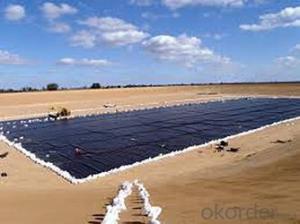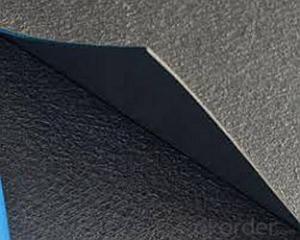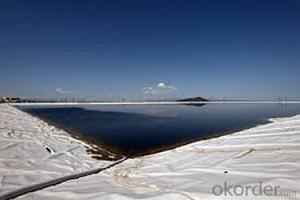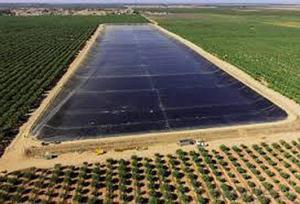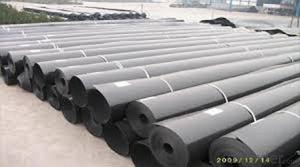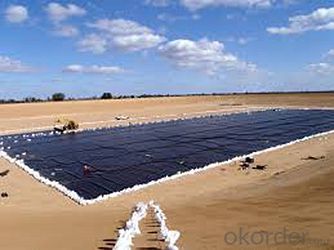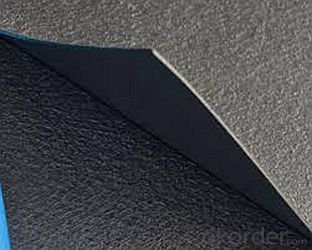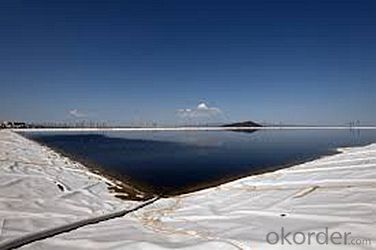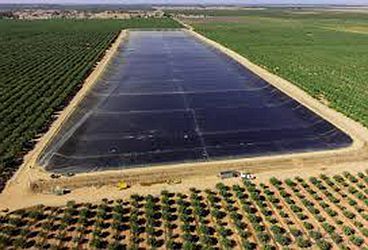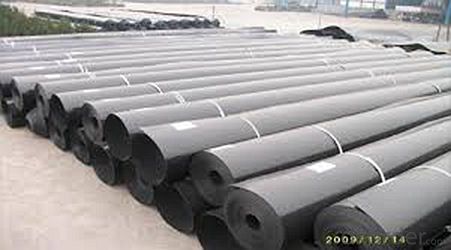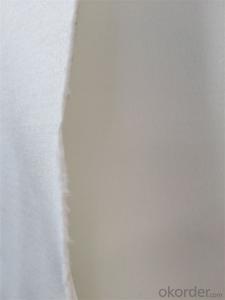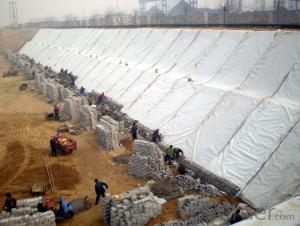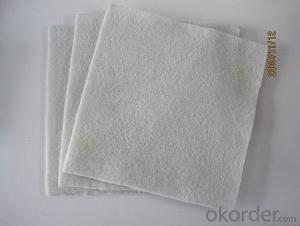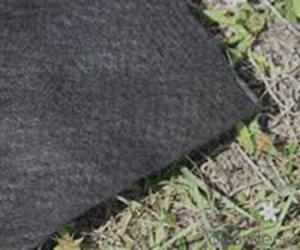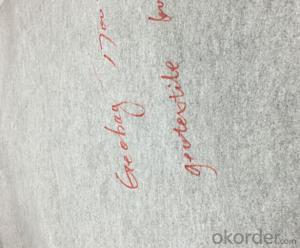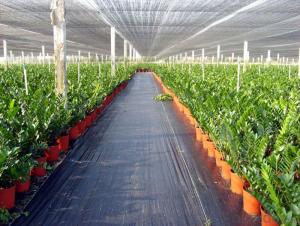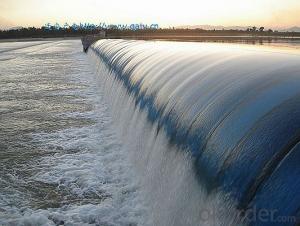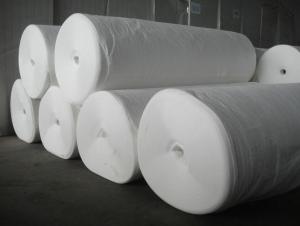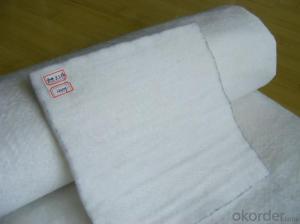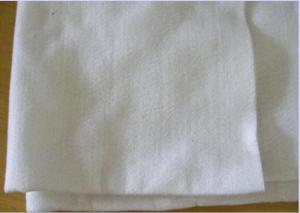4oz Non Woven Geotextile Fabric - Linear Polyethylene Geomembrane with Best Quality
- Loading Port:
- China main port
- Payment Terms:
- TT OR LC
- Min Order Qty:
- 1000 m²
- Supply Capability:
- 1000000 m²/month
OKorder Service Pledge
OKorder Financial Service
You Might Also Like
Specification
Applications:
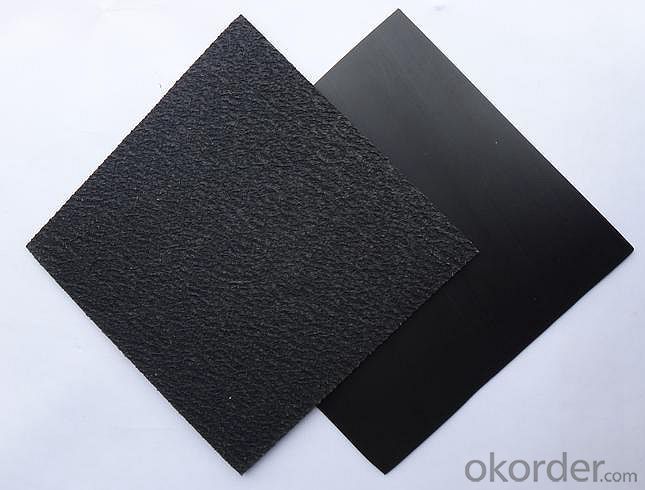
Product description
A geomembrane is very low permeability synthetic membrane liner or barrier used with any geotechnical engineering related material so as to control fluid (or gas) migration in a human-made project, structure, or system. Geomembranes are made from relatively thin continuous polymeric sheets, but they can also be made from the impregnation of geotextiles with asphalt, elastomer or polymer sprays, or as multilayered bitumen geocomposites. Continuous polymer sheet geomembranes are, by far, the most common.
Overall features & benifits
1. Low Permeability - HDPE lining systems are secure because leachate does not
Penetrate them; Methane gas will not escape from the HDPE cover system; And
Rainwater will not infiltrate an HDPE cap.
2. Chemical Resistance - HDPE, resistant to a wide range of chemicals, is not threatened by typical solid or hazardous waste leachates.
It is also suitable for sludge and secondary containment around chemical storage facilities.
Applicaion
Flood control, Irrigation
Waterproofing Dams
Waste management: Landfill
Municipal Solid Waste
Wastewater Containment
Anaerobic Lagoon Cover Systems
Lagoon Liner Systems
Tunnel
Our Service
Quality assurance
1.On a regular basis or as per your request,we entrust national testing agencies to conduct quality inspections
2. Strictly in accordance with the ISO9001-2008 international quality system standard,we monitor and manage the whole process throughout production,quality testing,and measurement to ensure product quality
3. For quality-related construction delay or substandard construction(except for damage or losses due to customer’s responsibility or irresistible natural disasters),we have refunding,replacement,and repair services.We will respond to customers’ feedbacks on quality issues within 24 hours.
Packing: PLASTIC FILM INSIDE, AND WOVEN BAG OUTSIDE
Shipping: About 15 days after receipt the deposit
FAQ:
Q: What kind of payments does jenor support?
A: T/T, L/C, Cash are accepted.
Q: Do you charge for the samples?
A: Accordeing to our company policy, the samples are free, we only charge the freight fee. And we will return the freight fee during the next order.
Q: Can you produce according to customers' design?
A: Sure, we are professional manufacturer, OEM and ODM are both welcome.
Q: Do you have other products?
A: Yes, please check the pictures:
- Q: Can geotextiles be used in green roof applications?
- Yes, geotextiles can be used in green roof applications. They are commonly used as a separation layer between the growing medium and the underlying roof surface. Geotextiles help prevent the migration of fine particles, provide drainage, and aid in retaining moisture for the plants on the green roof.
- Q: How do geotextiles aid in the reduction of pore water pressure?
- Geotextiles aid in the reduction of pore water pressure by providing a barrier that allows water to flow through while preventing the movement of fine soil particles. This helps to maintain the stability of soil structures, as the geotextile acts as a filter, allowing excess water to drain away and reducing the build-up of pressure within the soil.
- Q: Where is the non-woven geotextile in the tunnel?
- The nonwoven geotextile is used to isolate the dome between the concrete and the waterproof layer in the tunnel.
- Q: How do geotextiles help with embankment stabilization?
- Geotextiles aid in embankment stabilization by providing reinforcement and preventing erosion. They act as a barrier against soil movement, distributing loads and reducing the risk of slope failure. Additionally, geotextiles enhance drainage and filtration, allowing water to pass through while retaining soil particles. This combination of functions helps maintain the stability and longevity of embankments.
- Q: What is the geotextile customs code?
- Hello: I can only give an example: if you ask the goods belong to the weight per square meter of more than 150 grams of non-woven weaving, can be returned, because you do not have a detailed description of the source of raw materials, production processes, Into the product code under 5603.1410. If you are satisfied with my answer, I would like to be accepted and given praise, thank you!
- Q: Polypropylene geotextile and polyester geotextile with the naked eye how to distinguish
- Polypropylene compared to white, polypropylene fiber than polyester fiber density point, anti-aging anti-aging of polypropylene, polyester aging,
- Q: How do geotextiles help with reinforcement of geotextile tubes?
- Geotextiles help with the reinforcement of geotextile tubes by providing strength, stability, and durability to the structure. They act as a barrier against soil erosion and provide a layer of protection for the geotextile tube. Additionally, geotextiles distribute the stresses evenly throughout the structure, improving its load-bearing capacity and preventing potential failures.
- Q: How do geotextiles contribute to soil stabilization?
- Geotextiles contribute to soil stabilization by acting as a barrier that prevents soil erosion, reduces sedimentation, and improves overall soil strength. They provide reinforcement by distributing loads and preventing soil particles from moving, thus stabilizing the soil and preventing slope failures. Additionally, geotextiles promote moisture retention and drainage, enhancing the soil's stability and preventing water-induced damage.
- Q: What are the factors to consider when designing geotextile-reinforced slopes?
- When designing geotextile-reinforced slopes, several factors need to be considered. These include the type and strength of geotextile to be used, the slope angle and height, soil properties, expected loads and stresses, water drainage and erosion control measures, construction methods, and long-term performance requirements. Additionally, site-specific conditions such as climate, vegetation, and nearby structures should also be taken into account. Proper consideration of these factors ensures a safe and stable design that effectively mitigates slope failures and erosion.
Send your message to us
4oz Non Woven Geotextile Fabric - Linear Polyethylene Geomembrane with Best Quality
- Loading Port:
- China main port
- Payment Terms:
- TT OR LC
- Min Order Qty:
- 1000 m²
- Supply Capability:
- 1000000 m²/month
OKorder Service Pledge
OKorder Financial Service
Similar products
Hot products
Hot Searches
Related keywords
